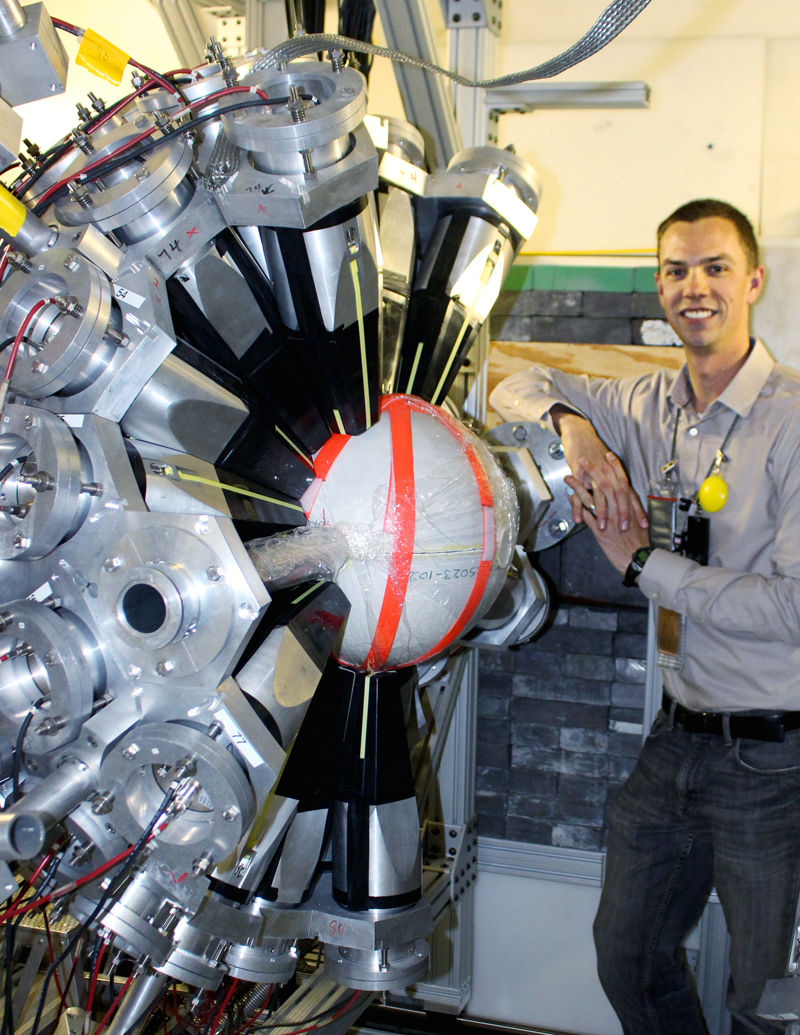NSCL Alumni Highlight: Shea Mosby
Contributed by Artemis Spyrou
Nuclear structure; nuclear reactions; nuclear astrophysics; NSCL alumni, Shea Mosby, uses a well rounded set of skills to answer some of the most exciting open questions of our field. Shea is a staff scientist at the Los Alamos National Laboratory. His work has recently been highlighted by the Los Alamos Science and Technology magazine, 1663, in the article “The other nuclear reaction”. The article explains that it is not nuclear fission or fusion, and it is not any type of decay, but it’s the neutron-capture reaction that is responsible for making about two thirds of the elements we see around us. Shea is studying these crucial reactions using a device called DANCE, the Detector for Advanced Neutron Capture Experiments. In these experiments, a neutron beam hits a target located at the center of DANCE, and DANCE detects the gamma radiation emitted following the capture of a neutron by the target nucleus. The goal is to study the probability for this reaction to take place, and learn about its impact on the stellar environment and the creation of the elements.
Shea started his career as a graduate student at the NSCL. During this time he was part of the MoNA group, working with Michael Thoennessen, and studying the decay of one of the most exotic nuclei, carbon-21. This nucleus has 15 neutrons attached to its only 6 protons. With such huge neutron excess, carbon-21 is neutron-unbound, meaning that it will kick out one of its neutrons in only a tiny fraction of a second; a billionth of a trillionth of a second to be exact. Despite the short time scale, Shea and the MoNA collaboration could measure this exotic decay by measuring the emitted neutron and the remaining carbon-20 nucleus.
After his PhD, Shea moved to Los Alamos National Lab to work with Aaron Couture as a postdoctoral researcher. During this time the group measured the neutron capture on uranium and plutonium isotopes. Even though these reactions had been measured before, in the 1950s to 70s, the new measurements were greatly improved and resolved some long-standing discrepancies between theory and experiment.
Now, as a staff scientist, Shea is looking to “advance nuclear technology and discover key details about how the universe works” as described in the 1663 article. You can find the full highlight on Shea’s work here: http://www.lanl.gov/discover/publications/1663/2017-may/other-nuclear-reaction.php




